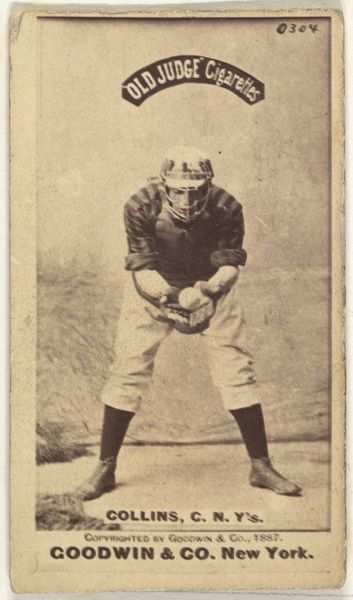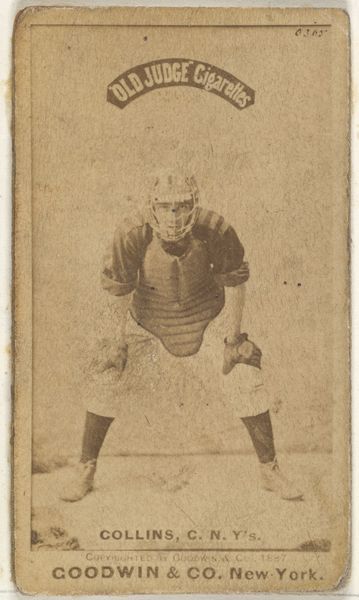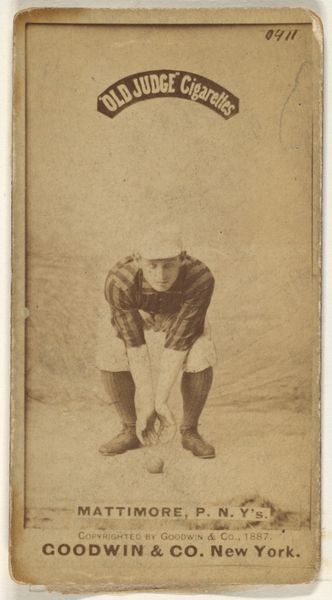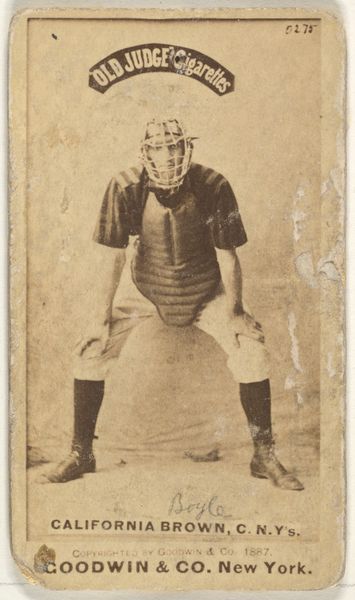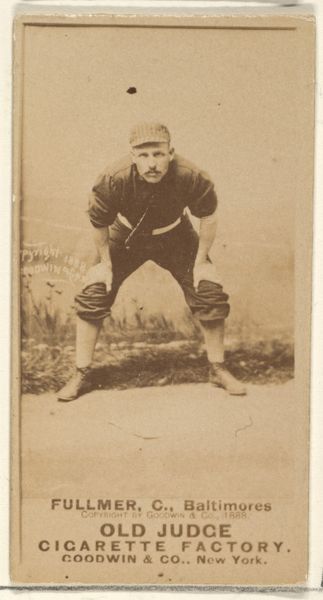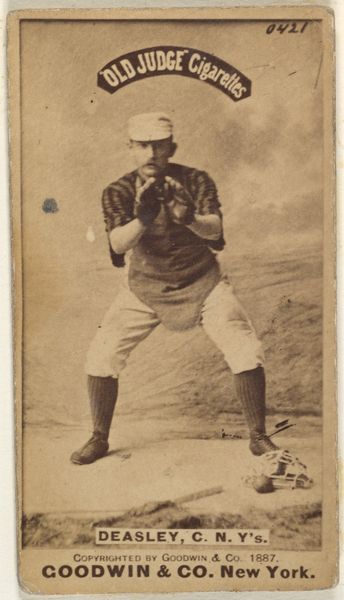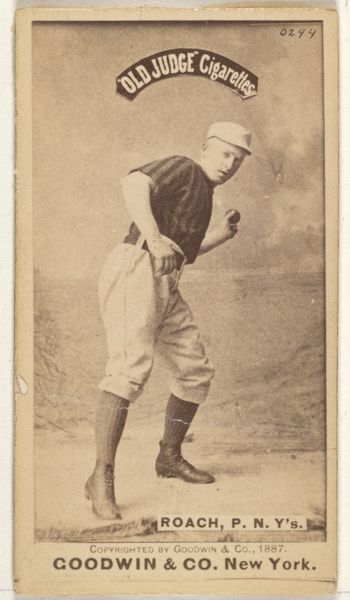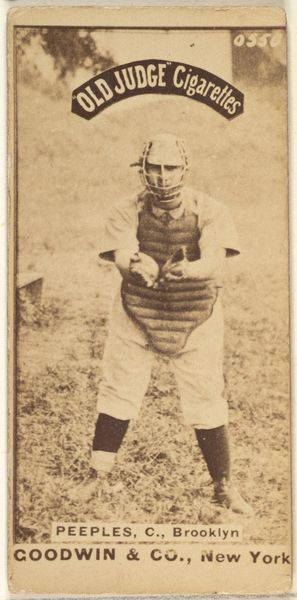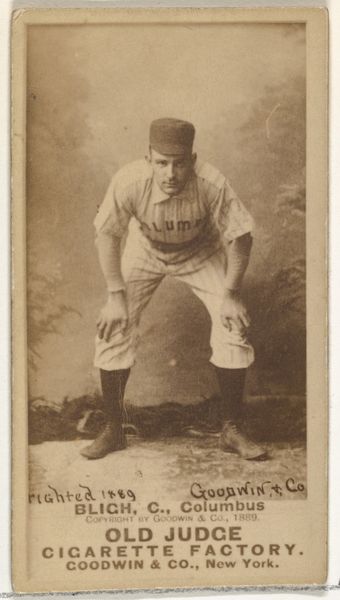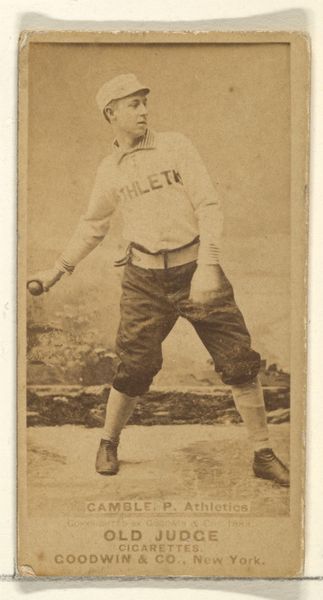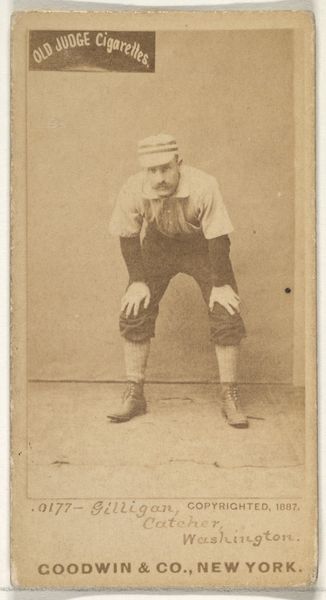
William "California" Brown, Catcher, New York, from the Old Judge series (N172) for Old Judge Cigarettes 1888
0:00
0:00
drawing, print, photography
#
portrait
#
drawing
# print
#
baseball
#
photography
#
photojournalism
#
men
#
athlete
#
realism
Dimensions: sheet: 2 11/16 x 1 3/8 in. (6.9 x 3.5 cm)
Copyright: Public Domain
Curator: It looks like he’s peering right through you, doesn't it? There's a vulnerability, even through the cage, like a soul in need of protection. Editor: Indeed. This piece, "William 'California' Brown, Catcher, New York," comes from the "Old Judge" series, created by Goodwin & Company in 1888 for Old Judge Cigarettes. It's a fascinating intersection of portraiture, advertising, and the burgeoning world of baseball. These were originally distributed as trading cards, photographic prints promoting a lifestyle while capturing a specific sporting moment in time. Curator: The sepia tones, almost like looking through a faded memory. It speaks to something profound, I think, about holding onto fleeting moments and romanticizing times that weren’t so very different. He’s posed as a Roman statue might be. It’s wonderfully strange. Editor: Absolutely, but let’s remember the historical context here. Consider the rise of consumer culture, industrialization, and ideas surrounding masculinity converging. This card immortalizes William "California" Brown, positioning him within an exclusive sphere that caters to white, middle-class consumers while subtly excluding others. These cigarette cards helped define early popular culture and the place of sports figures in the collective consciousness, while reinforcing ideas around who belonged. Curator: Ouch, yeah… I got lost in my nostalgic feelings! It’s an odd marriage, selling athleticism and virility by association with, you know, inhaling burning leaves. Editor: Precisely. Consider it as part of a larger narrative that touches upon questions of representation, commodity fetishism, and the formation of celebrity, but also it makes you wonder, why baseball and why ‘California’ Brown in the New York League? What was it like for him as a man with an unusual nickname during those years? We only get a glimmer here, mediated by commercial interests, of what would be. Curator: Right. I got sucked into the poetry of it and now I’m seeing… well, a commercial product exploiting image. Editor: I would frame it more as how this seemingly benign image acted as a social construction that informed who has access to fame, while profiting off the construction of celebrity within a limited playing field. Curator: Food for thought. Maybe seeing that soulful vulnerability wasn't wrong after all—we're all performing under capitalism’s masked and caged demands to some extent. Editor: Agreed. Let us use art as an entryway for grappling with the big questions of our era.
Comments
No comments
Be the first to comment and join the conversation on the ultimate creative platform.
